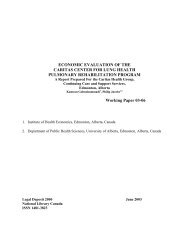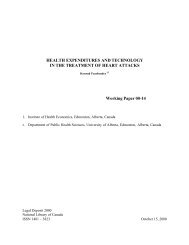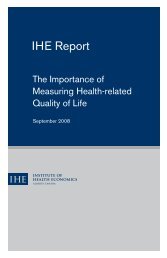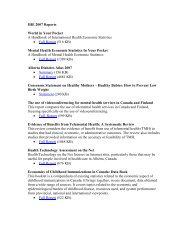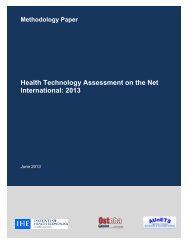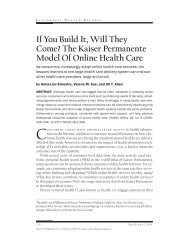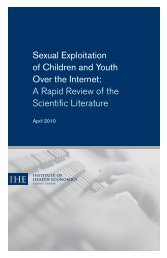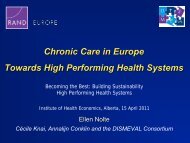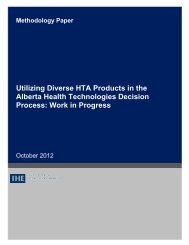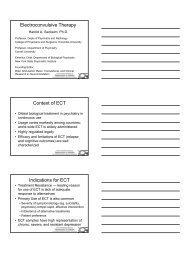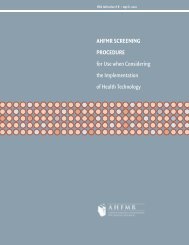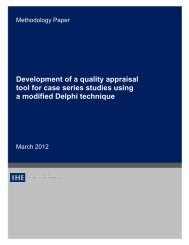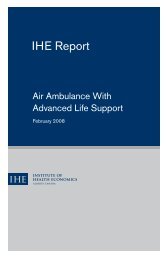Bariatric treatments for adult obesity - Institute of Health Economics
Bariatric treatments for adult obesity - Institute of Health Economics
Bariatric treatments for adult obesity - Institute of Health Economics
- No tags were found...
Create successful ePaper yourself
Turn your PDF publications into a flip-book with our unique Google optimized e-Paper software.
Time Horizon/discount rateCurrency/priceyearLifetime/3%Swiss Francs (CHF)/2006Result<strong>Health</strong> outcomesThe lifestyle intervention over the standard care in overweight, borderline, andmoderately obese patients was associated with 0.01 LY gained <strong>for</strong> both men and women.The lifestyle intervention over standard care was associated with QALY gained <strong>of</strong> 0.23 inoverweight women and 0.25 in overweight men, 0.25 in borderline women and 0.28 inborderline men, and 0.26 in moderately obese women and 0.29 in moderately obese men.CostsMarginal analysisConclusionThe incremental costs <strong>of</strong> the lifestyle intervention over standard care were CHF 510 inoverweight women and CHF 405 in overweight men, CHF 80 in borderline women andCHF 6 in borderline men, and CHF 207 in moderately obese women and CHF 127 inmoderately obese men.Results <strong>of</strong> the marginal analysis were reported by age/sex groups.For overweight patients, the ICER was from CHF 17,149 in 55-year-old men to CHF295,863 in 25-year-old women per LY gained, and from CHF 914 in 55-year-old men toCHF 6286 in 25-year-old women per QALY gained.For moderately obese patients, the ICER was from dominant (due to more effective andless costly) in 45-year-old and 55-year-old men to CHF 171,544 in 25-year-old women perLY gained, and from dominant in 35-year-old women and 55-year-old men to CHF 3180in 25-year-old women per QALY gained.For borderline patients, the ICER was from dominant in all male age groups to CHF142,619 per LY gained in 25-year-old women, and from dominant in all male age groupsto CHF 3,023 per QALY gained in 25-year-old women.The lifestyle interventions were cost-effective in long-run.20 Study 27 Authors/publish year: Bemelmans/2008; country: Netherlands; study type: CEA, CUA;setting: community; study perspective: healthcare systemObjectiveTo evaluate the clinical and economic impact <strong>of</strong> a community intervention and anintensive lifestyle program <strong>for</strong> prevention <strong>of</strong> overweight.Population Individuals with a BMI ≥ 25 kg/m 2InterventionTime Horizon/discount rateCurrency/priceyearCommunity-based intervention and intensive lifestyle modification were evaluated incomparison with no intervention. The community-based intervention <strong>of</strong>fered socialsupport such as self-help groups, risk factor screening, and/or counselling to 90% <strong>of</strong> thegeneral population, while the intensive lifestyle modification was <strong>of</strong>fered to 10% <strong>of</strong> thepopulation and targeted at overweight individuals.20 years and 80 years/4%€/2004<strong>Bariatric</strong> <strong>treatments</strong> <strong>for</strong> <strong>adult</strong> <strong>obesity</strong> 197



